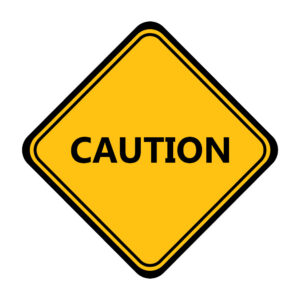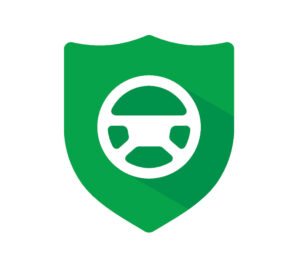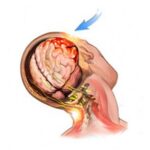
Author’s Update January 4, 2020
If you have been following the local news, you will know that over the holiday season there have been several tragic car accidents in Kansas City, one on Christmas night in Lee’s Summit. The state-wide death toll on Missouri roadways keeps increasing. To combat this trend, I am urging families to make driving safety a household priority in 2021. I hope this blog will provide families with an easy and memorable way to instill a safe driving approach that will protect themselves, their families, their passengers, and others on the roadway.
Safe driving shouldn’t just be a priority in your household; it should be the expectation. Get a good start on requiring safe driving for your teenager by teaching them Horn Law’s ABCDs of driving. After you have laid the foundation, you can preach these ABCDs to keep driving safety high on your teenager’s consciousness. Teach them that every driver has a responsibility to exercise the highest degree of care while operating a motor vehicle, which is why these ABCDs are so important.
Let’s start with an explanation of the ABCDs.
 A is for Alert
A is for Alert
To drive safely, you must stay alert while behind the wheel. Alert drivers stay focused on driving at all times when on the road. This means keeping your hands on the wheel, scanning the road ahead, expecting the unexpected, using your mirrors, yielding to aggressive drivers, and avoiding the temptation to multi-task.
Remember that driving alert is more than just avoiding distractions. It includes anything that takes your eyes off the road. A few common forms of driver multi-tasking include:
- Operating a cellphone or other electronic device
- Eating or drinking
- Changing the radio, temperature, or any other vehicle controls
- Talking or passing something to a passenger
- Attempting to locate something within the car
As your teen starts to drive, remind them that the best way to stay safe behind the wheel is always to remain alert and focused on the road.
 B is for Buckled
B is for Buckled
Make buckling up a habit that starts at a young age for your children. Once you have a teenager driving solo, you want to rest easy knowing that they are in the habit of always buckling their seatbelt before they take off in their vehicle. Truly, the only way to make sure your teenager is always buckled up in a car is to start teaching them the habit very early on.
You can make buckling up a habit by continually reinforcing the need to buckle up before starting the car. When your child(ren) is in the car, you can always check that they have their seatbelt on before you start driving. The more often you remind them to buckle their seatbelt, the more they will internalize the importance of this action.
Start to reinforce good behavior and denounce bad behavior. Emphasize how important seatbelts are and talk about the consequences of not wearing a seatbelt. Teach your children that seatbelts are designed to protect them.
Seatbelts prevent people from being ejected from vehicles, protect the head and spinal cord, and keep occupants from hitting each other and the car’s interior in the event of an accident.
 C is for Cautious
C is for Cautious
A cautious approach to driving makes everyone on the road safer. Teaching your teenager to take a cautious approach can help make our roadways a little safer. The most significant part of cautious driving is keeping a safe driving speed.
It is often challenging for teenagers not to feel peer pressure to drive faster. This becomes a bigger issue when teens drive in “pressure driving” situations like traffic jams or running late. Remind your teen that speeding will make very little difference in arrival time, so even when they are running late, it is better to mind the speed limit.
Another aspect of cautious driving is to avoid sudden lane changes or passing too quickly. Teach your teen the habit of safe passing using their mirrors and turn signals. You can also talk about how they need to concentrate more than usual when changing lanes, including keeping both hands on the wheel.
 D is for Defensive
D is for Defensive
To drive defensively is to expect the unexpected at all times. Kids who play video games will know exactly what you are talking about. You have to constantly be ready to make a move when you play video games or risk losing a life. Driving is very much the same, except the stakes are much higher.
Talk to your teen about the fact that there is a whole new universe of risk on the roadways that wasn’t present a decade ago. More people are driving distracted, hurried, and aggressive, making roadways more dangerous than ever.
Intersections also pose significant risks, especially to young drivers. Keep your teens aware of the dangers that arise at intersections, such as running stoplights and stop signs. When you drive with your teen in the car, take them through familiar intersections and point out the possibilities of harm.
Also, new drivers need to be taken out on a busy highway where traffic is moving briskly. Teach them that being defensive is yielding to faster traffic.
By preaching the ABCDs to your teenager, you can set the foundation for safe driving before they ever get behind the wheel. However, it is important that you continue to remind your teen to follow the ABCDs of safe driving.
Learn more about teen driver safety with the other blogs in this series:
Drive By Example: Show Your Teens How to Drive Safely
Teen Driver Safety: Protect Your Teen from a Car Crash
Why So Many People Aren’t Wearing Seat Belts
Why Glove Boxing the Phone Is the Best Example a Parent Can Set
Why Defensive Driving is the Best Thing Parents Can Teach Their Teen Drivers
Teach Your Teen Driver About These 5 Hidden Dangers





